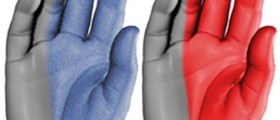
Piriformis syndrome is a rare condition affecting the nerves of the hip. It is caused by compression of the sciatic nerve, which starts at the bottom of the back and runs all the way down to the legs. In piriformis syndrome, the sciatic nerve is compressed by the piriformis muscle, hence the name of the condition.
The piriformis muscle rotates the hip and allows the thigh, the leg and the foot to point outward. It extends from the pelvis to the outer part of the hip. Sometimes, in approximately 15% of people, the sciatic nerve travels directly through piriformis muscle and becomes compressed by it.
Symptoms of piriformis syndrome
Symptoms of piriformis syndrome resemble those of sciatica, which is also caused by compression of sciatic nerve, but it is much more common than piriformis syndrome.
The symptoms of this syndrome include tingling, burning or crawling sensation, as well as occasional numbness of the back of the thigh, all the way to the knee and sometimes to the foot as well.
There may also be some tenderness and even numbness of the buttocks, pain, dull ache or general discomfort in the hip, groin and back of the thigh. The legs feel heavy and weak, muscles are fatigued and the pain and other symptoms usually become worse after intense physical activity, such as running, jumping, climbing several flights of stairs, walking long distances or riding a bike. The pain may also occur after long periods of sitting. It does not necessarily have to occur immediately after the triggering activity, and often the symptoms set in during night.
Treatment for piriformis syndrome
The initial treatment for piriformis syndrome should consist of plenty of rest, especially from activities that were identified as triggers of the symptoms. Gentle stretching of the hip is also highly recommended. After the first bout of symptoms subside, it is advised to see a physical therapist who will recommend a series of exercises that will make the condition better and prevent future problems.
Inflammation of the pinched nerve can be soothed with cortisone injections, possibly with a mild numbing agent.
Medications that are included in treatment of piriformis syndrome mostly include over-the-counter pain medication, such as ibuprofen. Stronger pain medication can only be taken with a doctor’s prescription, if he or she finds it necessary.
If the conservative approach fails to provide relief, surgery may be the only option. The surgical procedure for piriformis syndrome involves cutting of the muscle or tendon that presses the nerve and releasing the nerve.

















Your thoughts on this
Loading...